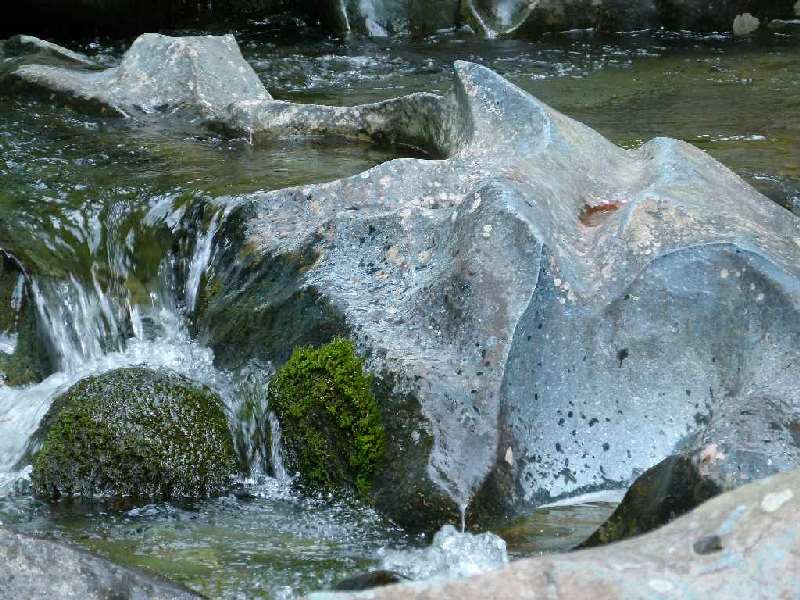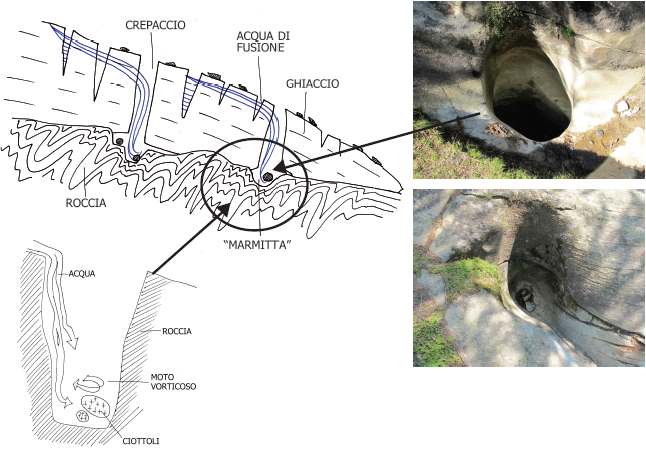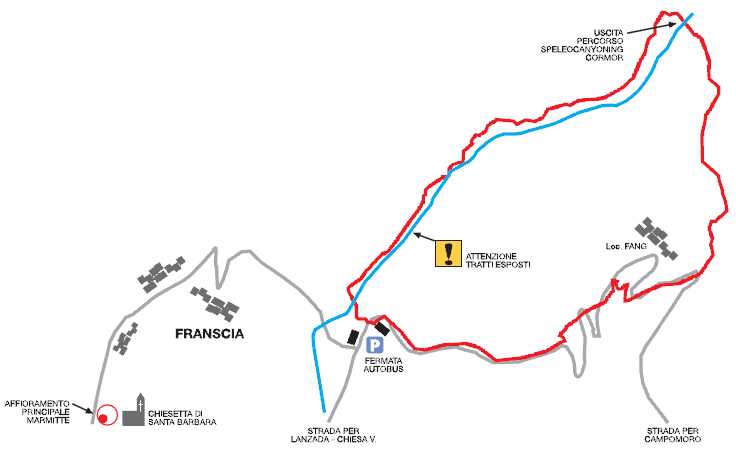 Stone sculptured by water.
Stone sculptured by water.
The phenomenon of the giants' pots can be found in two main areas in the hollow of Franscia, although there may be some in other areas nearby.
The route rising up alongside the Cormor torrent is impressive.
Here the phenomenon is constantly changing, as the water continues to physically, chemically and above all mechanically wear down the rock.
In several points you can get down on to the riverbed to observe the various rocky formations smoothed and rounded by thousand-year old processes of geological shaping.
There are all kinds of shapes and sizes, including the perfectly cylindrical giants' pots, created by the swirling debris in the melted waters of the glaciers.
Just as fascinating is the rediscovery of an outcrop on some high ground near the tiny church of Santa Barbara, where the absence of streams or surface water is evidence of how the phenomenon is the sole result of the activity of glaciers about 15,000 years ago.
One of the largest, most spectacular is over 3.50 m deep and was rediscovered in 2009, thanks to the work of many volunteers from the area, who each year undertake to search for and clean these fascinating rock formations.
The geology of the hollow of Franscia
 Diagram of the formation.
Diagram of the formation.
The hollow of Franscia and the surrounding mountains consist mainly of one type of rock: Serpentinite or Serpentine stone.
This is a metamorphic rock, created from the transformation of another deep-lying rock, peridotite, from the earth's mantle a long time before the formation of the Alps.
When the Alpine chain was formed tens of millions of years ago, the collision between the continental margins (African and European) fractured and incorporated a large fragment of the mantle within the structure of the Alps.
During these phases, the peridotite of the mantle was transformed (metamorphism) into the serpentinite of the Valmalenco.
This green rock consists of closely layered minerals (it can be divided into thin sheets).
Iron oxide produces rock surface alterations, which turn a typical rust red.
The path

The path loops from Franscia (1,490 m) and goes up alongside the Cormor torrent on the right bank.
There are several points you can get down on to the riverbed to observe the various rocky formations smoothed and rounded by thousand-year old processes of geological shaping.
There are all kinds of shapes and sizes, including the perfectly cylindrical giants' pots, created by the swirling debris in the melted waters of the glaciers.
A single water work is clearly visible and was used to measure the flow before the construction of the hydro-electric dams in the 50s.
The path crosses stretches of thin pasture and woods of Norway Spruce, where alternate moss, undergrowth and stones are fascinating to see.
The sound of numerous tiny waterfalls can always be heard.
The torrent is continually oxygenated, so it is full of wild life: the brown trout can often be seen swimming upstream.
At a height of 1,550 m, the path crosses the stream over an unusual hollow, which is at the bottom of the caving and canyoning route down the Cormor, most of which is underground, buried beneath an ancient paleo landslide.
The left bank rises amidst springs, carpets of moss and an unusual humid area at Fang, where the path soons rejoins the village of Franscia.